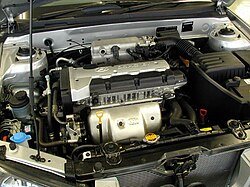
Hyundai, once known for producing cheap and unreliable cars in the 1980s and 1990s, has undergone one of the most remarkable turnarounds in the automotive industry. Today, it is recognized for high-quality vehicles that compete with top brands like Toyota, Honda, and even luxury automakers. This transformation was not accidental—it was the result of strategic investments in engineering, design, and customer satisfaction.
The Early Struggles: A Reputation for Poor Quality
When Hyundai entered the U.S. market in 1986 with the Excel, it gained initial popularity due to its low price. However, by the early 1990s, Hyundai cars were widely criticized for poor reliability, cheap materials, and lackluster performance. This led to a significant drop in sales and consumer trust.
Key Issues That Hurt Hyundai’s Reputation:
- Poor reliability: Early models suffered from frequent mechanical failures.
- Cheap build quality: Materials and craftsmanship were inferior to competitors.
- Low resale value: Hyundai vehicles depreciated quickly, discouraging new buyers.
By the mid-1990s, Hyundai faced a crisis. The brand was at risk of becoming irrelevant in the highly competitive global market.
The Hyundai Turnaround Strategy
Realizing the need for drastic changes, Hyundai’s leadership implemented a multi-faceted strategy to rebuild the brand’s image.
1. Heavy Investment in Quality and Engineering
In the late 1990s, Hyundai invested billions of dollars into research and development. The company focused on:
- Improving vehicle durability by adopting more rigorous testing procedures.
- Enhancing engine and transmission technology to match competitors.
- Increasing the use of high-strength steel (produced by its own subsidiary, Hyundai Steel) to improve safety and longevity.
This commitment to quality was a game-changer, allowing Hyundai to compete with established brands like Toyota and Honda.
2. The Industry-Leading 10-Year/100,000-Mile Warranty
In 1999, Hyundai introduced an industry-first 10-year/100,000-mile powertrain warranty, signaling confidence in its vehicles. This move reassured consumers and removed the fear of Hyundai’s past reliability issues. The strategy was so successful that other automakers later introduced extended warranties to stay competitive.
3. Focus on Design and Innovation
In the 2000s, Hyundai hired top designers from luxury brands like Audi to overhaul its vehicle aesthetics. New models featured sleek designs, modern interiors, and premium materials. The Hyundai Sonata (2011 model) became a major success, proving that Hyundai could offer both quality and style.
Additionally, Hyundai embraced innovation by investing in:
- Hybrid and electric vehicles (like the Ioniq and Kona Electric).
- Advanced safety features (such as lane-keeping assist and smart cruise control).
- Cutting-edge infotainment systems to enhance user experience.
4. Expanding Production and Quality Control
To further improve reliability, Hyundai built state-of-the-art manufacturing plants in South Korea, the U.S., and other global locations. Strict quality control measures ensured that cars met higher standards before reaching customers.
The Results: Hyundai’s Rise to a Global Leader
By the 2010s, Hyundai had successfully reversed its negative reputation. Some key indicators of its success include:
- High rankings in J.D. Power and Consumer Reports for reliability and quality.
- Increased sales and brand loyalty in the U.S., Europe, and other markets.
- Respected sub-brands like Genesis, which competes with luxury brands like BMW and Mercedes-Benz.
Conclusion
Hyundai’s transformation from a low-quality automaker to a respected global brand is a testament to the power of strategic investment, innovation, and customer trust. By prioritizing quality, offering unbeatable warranties, and embracing modern design and technology, Hyundai successfully changed its reputation and became one of the world’s most reliable and respected car manufacturers.
What do you think about Hyundai’s turnaround? Would you consider buying one today?
